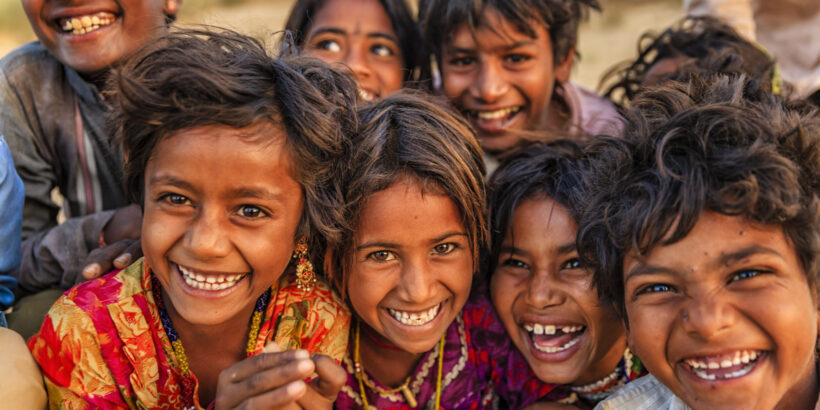India is thought to have one of the highest burdens of typhoid in the world. Considering the emergence of drug resistance, climate change, and population movement, particularly during the COVID-19 pandemic, the burden shows no signs of lessening.
In 2017, the Surveillance for Enteric Fever in India (SEFI) project was established to determine the burden of typhoid and paratyphoid in recognition of the data gaps caused by a lack of nationally representative enteric fever incidence data in the country. The project aimed to estimate the age-specific incidence of enteric fever in children in diverse settings throughout India, and to generate information on antimicrobial resistance patterns. This information is pertinent for decision-makers in the region to prioritize typhoid conjugate vaccine (TCV) introduction and improved safe water, sanitation, and hygiene (WASH) infrastructure.
We spoke with Jacob John, an investigator for SEFI, to discuss the findings, which published today in the New England Journal of Medicine.
This study has been ongoing for several years, and new data on typhoid burden in India were just published. Why are these recent data so crucial?
While we’ve long known typhoid burden in India is substantial, systematic surveillance remains largely limited. Our study generated critical data on the national incidence of typhoid in India to support policy decisions and to help prioritize typhoid control with tools such as TCV.
We found that typhoid incidence, specifically in urban areas, greatly exceeds previously published burden estimates. The incidence of blood culture-confirmed typhoid in children in 3 urban centers ranged from 576 per 100,000 child-years observed in Delhi to 1,173 per 100,000 in Vellore. This is a staggering figure. These results suggest that TCV could have a major impact on reducing typhoid disease and be a highly cost-effective intervention in India.
The data suggest typhoid burden has likely been underreported given the widespread use of antibiotics. They also show high levels of drug-resistant typhoid in India. Why is this concerning?
Early administration of antibiotics in children with suspected typhoid is common and it reduces fever, but it makes these patients ineligible for blood culture. This may contribute to an underreporting of true typhoid incidence. In India, azithromycin and cephalosporins are the most commonly administered antibiotics for presumed typhoid cases. Resistance to third-generation cephalosporins has not yet been reported in India, however, six typhoid isolates from our study showed evidence of resistance to azithromycin, one of the last effective oral antibiotics to treat typhoid in many settings.
As drug-resistant typhoid continues to evolve, more strains could become extensively drug-resistant (XDR). The treatment of XDR strains often requires harder to access intravenous antibiotics and in-patient care and can be costly to both families and health systems.
Can you share more about the migration patterns that are outlined in the paper and why it is important for typhoid control?
We see a high incidence estimate of typhoid in children in urban areas and moderate typhoid incidence within rural communities. Interestingly, we found a higher incidence of hospitalization within rural settings for individuals older than 15 years, which may indicate that exposure to Salmonella Typhi during childhood is much lower in rural communities compared to urban areas. As younger people from rural areas migrate to urban areas, they are at an increased risk of contracting typhoid, and if they return to rural areas after contracting typhoid, we see the burden of treatment fall on rural healthcare facilities. With fewer healthcare facilities compared to urban areas, the volume of patients can overwhelm rural facilities, making treatment for patients more difficult.
These migration patterns are important when considering a TCV introduction strategy. Our findings suggest the optimal TCV introduction strategy for India must include children in both rural and urban areas. It will be important to consider how to reach children regardless of where they live now, so they are protected no matter where they live years later.
What do you want policymakers to take away from this study? In an ideal world, what is the action that comes from these data?
Prevention and control of drug-resistant typhoid is a public health priority, especially where the disease is already endemic. Let this growing body of data sound the alarm for policymakers that it is only a matter of time before typhoid becomes untreatable with readily available antibiotics and a reassurance that we know what we must do to mitigate the harm to our communities.
From publication to practice: A response to the data from India
In an editorial accompanying the publication in the New England Journal of Medicine, Dr. Kathleen Neuzil reiterates the need to control enteric fever, especially given the rise in antimicrobial resistance and factors that are likely to increase typhoid transmission, including climate change, extreme weather events, and urban migration. While improvements to WASH infrastructure are essential to the sustainable prevention of typhoid, these interventions require an abundance of time and resources. As a global health community, we cannot afford to wait.
Dr. Neuzil argues for complementary alternatives to blood-culture based surveillance to provide more data for decision-making. Countries need additional data points to fully understand and appreciate the burden of typhoid in their country. With more robust data points, decision-makers can make a strategic decision about TCV introduction for their country.
TCVs are a safe, cost effective, impactful tool to control typhoid, and must be a made a priority given the data from this study in India reinforces what we know. Drug-resistant typhoid continues to spread rapidly, not only in India, but in other endemic areas. We must think creatively—and act strategically—to ensure TCVs reach all children who need them most.
Photo: Sabin Vaccine Institute.



